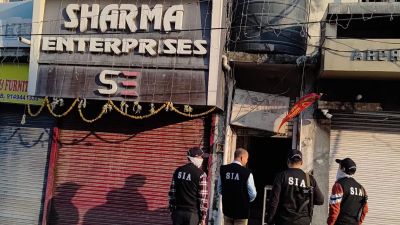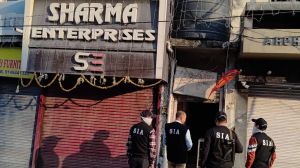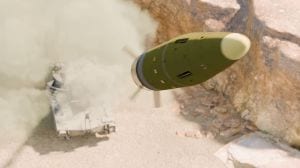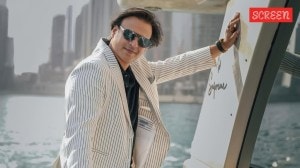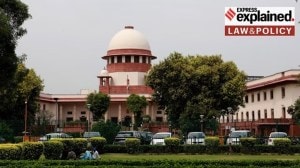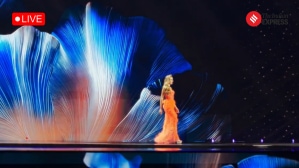Between War and Peace
Before the plane landed at the Incheon International Airport of South Korea,our half-baked impression of the country was that of Psy,kimchi and the mounting threats from its partitioned neighbour,North Korea.
No amount of Google search or guide books prepares a visitor for South Korea
Before the plane landed at the Incheon International Airport of South Korea,our half-baked impression of the country was that of Psy,kimchi and the mounting threats from its partitioned neighbour,North Korea. You Indian? Travelling alone? Welcome to South Korea, exclaimed an immigration officer as we queued up,the nippy 8 degrees like a balm to our senses just 10 hours after we were about to combust in Delhi. It,however,wasnt as much his curiosity as the delight on his face that eased us into this strange country.
A 45-minute ride on the very convenient Airport Limousine Bus (equivalent to an Indian Volvo) later,we were in the heart of the city of Seoul. Unlike the tightly-closed Communist North,South Korea has the Wests imprint with its towering superstructures,glitzy malls,figures in blacks and greys,and international brands dotting almost every other kerb. Yet,a majority of people are not adept in English and fiercely stick to Korean. Thankfully,we had an English-speaking guide,a 48-year-old mother of two,Joy.
A tourist here will perhaps be startled,especially amid the heightened political crisis,by how calm it is. Joy explained,It must be news to you,but here in South Korea,were used to this. Nothing will happen.
Our first stop was the National Museum of Korea,located in the Yongsan district of Seoul,which was established in 1945. As a student of history,I was fascinated by the comparatively small three-storey structure,as opposed to Delhis sprawling National Museum,and even more by the few artefacts (a total collection of 3,20,000 with just 12,000 on display). From prehistoric relics to the astounding 16th century 10-storey pagoda,the National Treasures section held us in thrall. There is a crown from the Silla Kingdom of 5th century,a foetus-shaped jade and other emblems of Shamanic symbology; in another room,the Pensive Bodhisattva takes centrestage. Thats a smile of contentment. Take this smile as a gift from us, our guide proferred.
By the end of day one,were accustomed to the greetings almost everywhere we go. In the neighbourhood of Insa-dong,known for its antiques,art galleries and adorable tea shops,we were greeted by annyong haseyo (hello in Korean). An odd one or two enthusiastically claimed to have visited Mumbai or Delhi,while stirring up a cup of nokcha,the Korean green tea. Joy later told us that annyong haseyo,in the bygone days of economic and political crisis,literally translated to,Are you safe?
As evening falls,we head for the Five Palaces built by the Joseon kings (1392-1897),strewn across Seoul,some heavily damaged during the Japanese occupation (1910-1945). Arriving at the walled premises of Changdeok Palace,which has a special night tour,lamps and audio guides were handed out,and we entered the majestic lit-up structures,moving from the kings office to multiple gardens. Fifteen minutes later,a stone stairwell led us to a pond and the breathtaking,luminescent structure next to it that houses the bed chamber. After being handed steamy aromatic ginger tea (a respite as the temperature dipped),the tour ended with a traditional Korean music performance just outside the palace.
Our tightly-scheduled trip also had the countryside in the itinerary,which we later realised,roughly corresponded to less urban. About four hours from Seoul is Yeosu,on the South Korean peninsula,where the hotel room gave us a jaw-dropping view of Bay of Suncheon,sprinkled with islands (317 of them,of which 268 are uninhabited),fading in the blue. We briefly visited the city of Changwon,the capital of Gyeongsangnam-do district located on the south-east coast. An industrial hub,its known for its bicycle culture and the impeccably clean streets. Concluding the day was the famed House of Changwon,a former residence of a Korean scholar,now a cultural complex of 14 Korean architecture structures,offering a taste of ancient local culture and cuisine. The dinner,to our delight,was accompanied by a troupe playing Gangnam Style on traditional instruments like the gayageum,flute and a drum,a haunting rendition that instantly became a favourite over the original.
Put your cameras away. No pictures here, said Joy sternly,looking around nervously. It was the last day of our trip and by far the most exciting. We were at the DMZ,or the demilitarized zone between North and South Korea. As we passed through the several layers of the 38th Parallel,instructions rained down: do not turn around and take pictures of South Korean defence structures,waving and pointing at the North Koreans is prohibited,and no monkey dancing,people have been shot before.
With a history of infiltrations,mostly from the North,we passed through landmarks such as Bridge of No Return (used for prisoner exchanges at the end of the Korean War in 1953) and the ground of Axe Murder incident,where two US Army officers were killed by North Korean soldiers in 1976. At the Joint Security Area,you can literally stand in North and South Korea at the same time. The most poignant was the visit to the Imjingak Park,a tourist location built in 1976 with the hope of reunification. A corroded and bullet-battered train stood as a monument on the Gyeongui Train Line,destroyed during the Korean conflict in 1950.
During the stay,we had stumbled upon Pauls Journey with Korean Food,by Australian chef Paul Schenk,which became our dummys guide to understanding Korean cuisine. We had tasted the kimchi,made of fermented vegetables,at Delhis Korean Cultural Centre cafe,not exactly warming up to its unfamiliar taste. But once there,it was unfair to stop at that. From a crispy gimbap (rice rolled in laver) and succulent dak bokkeumtang (spicy simmered chicken stew) to a light jogaetang (clam soup),we also had a few firsts,such as snacks made of octopus. The main course is always accompanied by the comforting sticky rice,and rice cakes and cinnamon punch make for a sweet ending.
Rabindranath Tagore,during his Korea visit in 1929,wrote,In the golden age of Asia/ Korea was one of its lamp-bearers/ and that lamp is waiting to be lighted once again/ for the illumination in the East. Not known as a mainstream holiday destination,South Korea could be one of the worlds best-kept secrets. There seemed to be quiet in the Land of Morning Calm as we bid farewell,but Joy folded her hands anyway as she said,Pray for us.
(The trip was sponsored by Journalist’s Association of Korea,in association with Korean Cultural Centre,Embassy of Republic of Korea)





- 01
- 02
- 03
- 04
- 05


